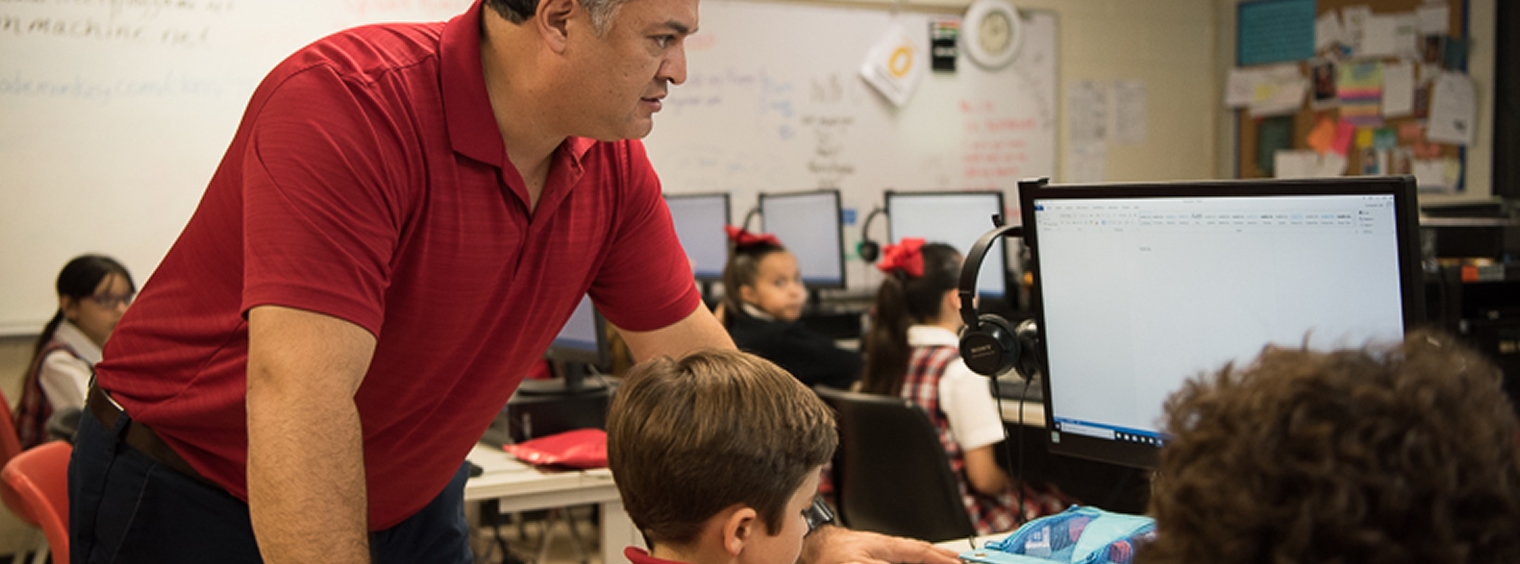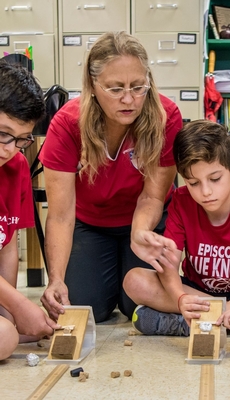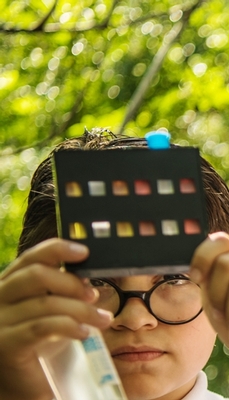

Patrick Rodriguez Center for Innovation
Engineering Design and Makers space
Students in K5-6th grades enjoy ample time in our Innovation Center. Through innovative and cross-disciplinary projects, science, technology, engineering, the arts, and math (STEAM) play an important role in student learning. Our students use design thinking to develop creativity, collaboration, communication, and critical thinking in the Maker Space. They pursue their passions as they cultivate their use of Design Thinking and Project Based Learning.
In the engineering design space students build wind turbines, learn coding, 3D printing, and make rubber band powered cars and more. This fully functioning lab also includes 3D modeling, laser cutting and engraving, NAO Robot, a fleet of drones and coding/programing for grades K5 to adult.
Makers Space
Makers Space is the perfect place for our K5 -3rd graders to participate in STEAM (Science, Technology, Engineering, the Arts, and Mathematics) activities and challenges. Students collaborate with their classmates and teachers while participating in projects. They learn about the Engineering Design Process while repurposing materials, making models, and creating. It’s amazing to see how innovative our students can be!
While we always strive to celebrate all of our engineering successes, we also place great value in learning about why things failed. This concept helps children learn that there are many ways to approach a problem, and that some problems may have more than one solution. The problem-solving skills learned in the Makers Space will prove to be an invaluable tool that goes far beyond the classroom as the children grow. Our belief is that their ideas may truly change the world!
Why Engineering Design?
If you’ve ever watched children at play, you know they’re fascinated with building things—and taking things apart to see how they work. In other words, children are natural-born engineers. When children engineer in a school setting, research suggests several positive results:
- Building Science and Math Skills
Engineering calls for children to apply what they know about science and math—and their learning is enhanced as a result. At the same time, because engineering activities are based on real-world technologies and problems, they help children see how math and science are relevant to their lives.
- 21st Century Skills
Hands-on, project-based learning is the essence of engineering. As groups of students work together to answer questions like, “How large should I make the canopy of this parachute?” or, “What material should I use for the blades of my windmill?” they collaborate, think critically and creatively, and communicate with one another.
- Career Success
Classroom engineering activities often require students to work in teams where they must collaborate and communicate effectively. In the 21st century, these skills will be critical for career success in any field.
Research also shows that when engineering is part of elementary instruction, students become more aware of the diverse opportunities for engineering, science, and technical careers—and they are more likely to see these careers as options they could choose.
Why Drones?
Drones are one of the world’s fastest growing technologies. According to a study by Goldman Sachs, drones are expected to become a 100 billion dollar marketplace by 2020. Inspections, cinematography, transportation, search and rescue, research, preservation, disaster relief — there’s no limit to what drones will do.
Why 3D Printers?
3D printing provides several features that can revolutionize education. Here are some of them:
It provides teachers with 3 dimensional visual aids that they can use in their classroom particularly in illustrating a hard to grasp concept.
3D printers make it easy for teachers to seize the interest of their students compared to just showing the pictorial representations of objects.
It enhances hands-on learning and learning by doing. Using this prototyping technology, students will be able to produce realistic 3 dimensional mini-models. (Great for engineering, architecture, and multi-media art students).
It provides more room for interactive class activities. In biology, for instance, teachers can create a 3D model of the human heart, head, skeleton...etc. to teach students about the human body.


